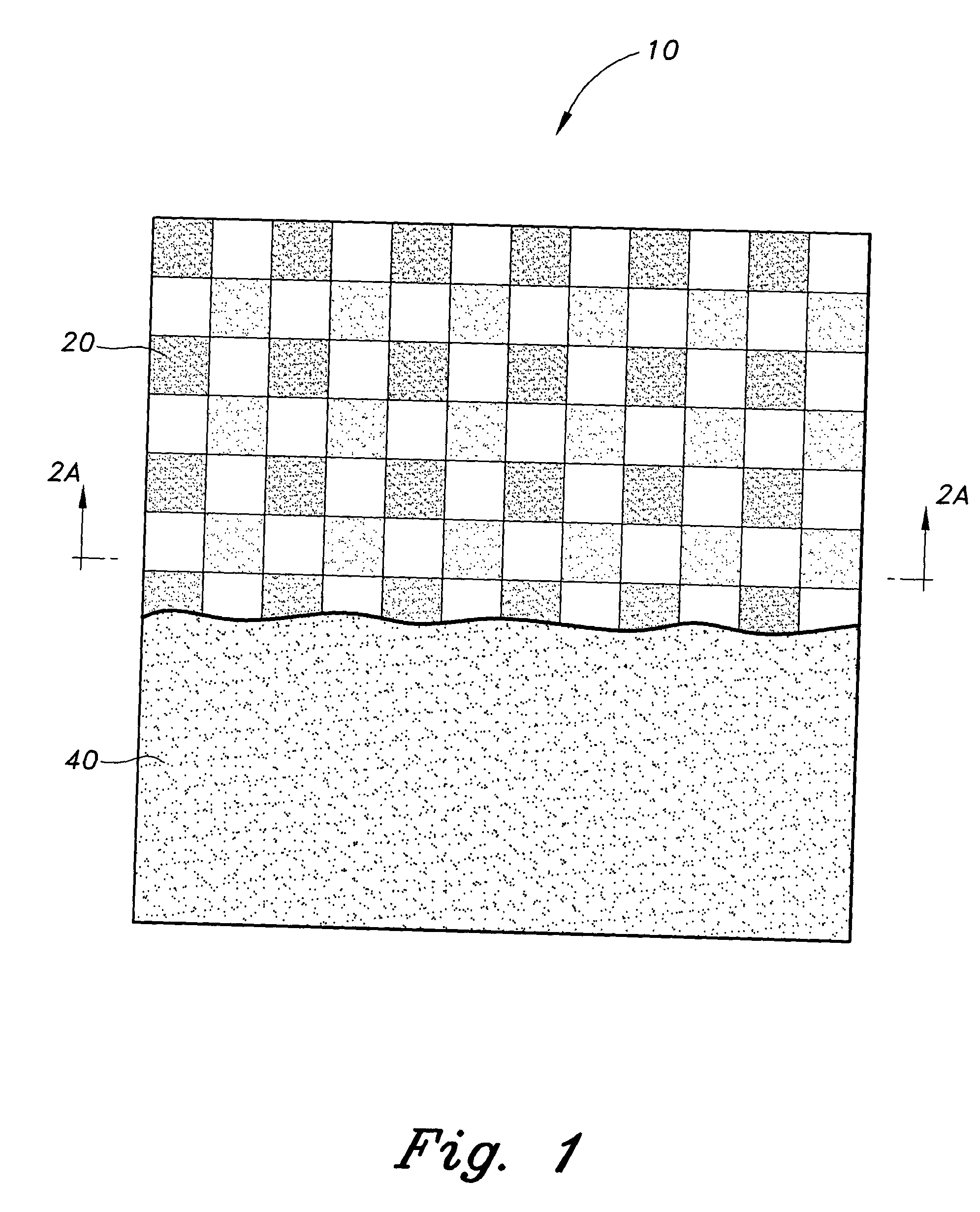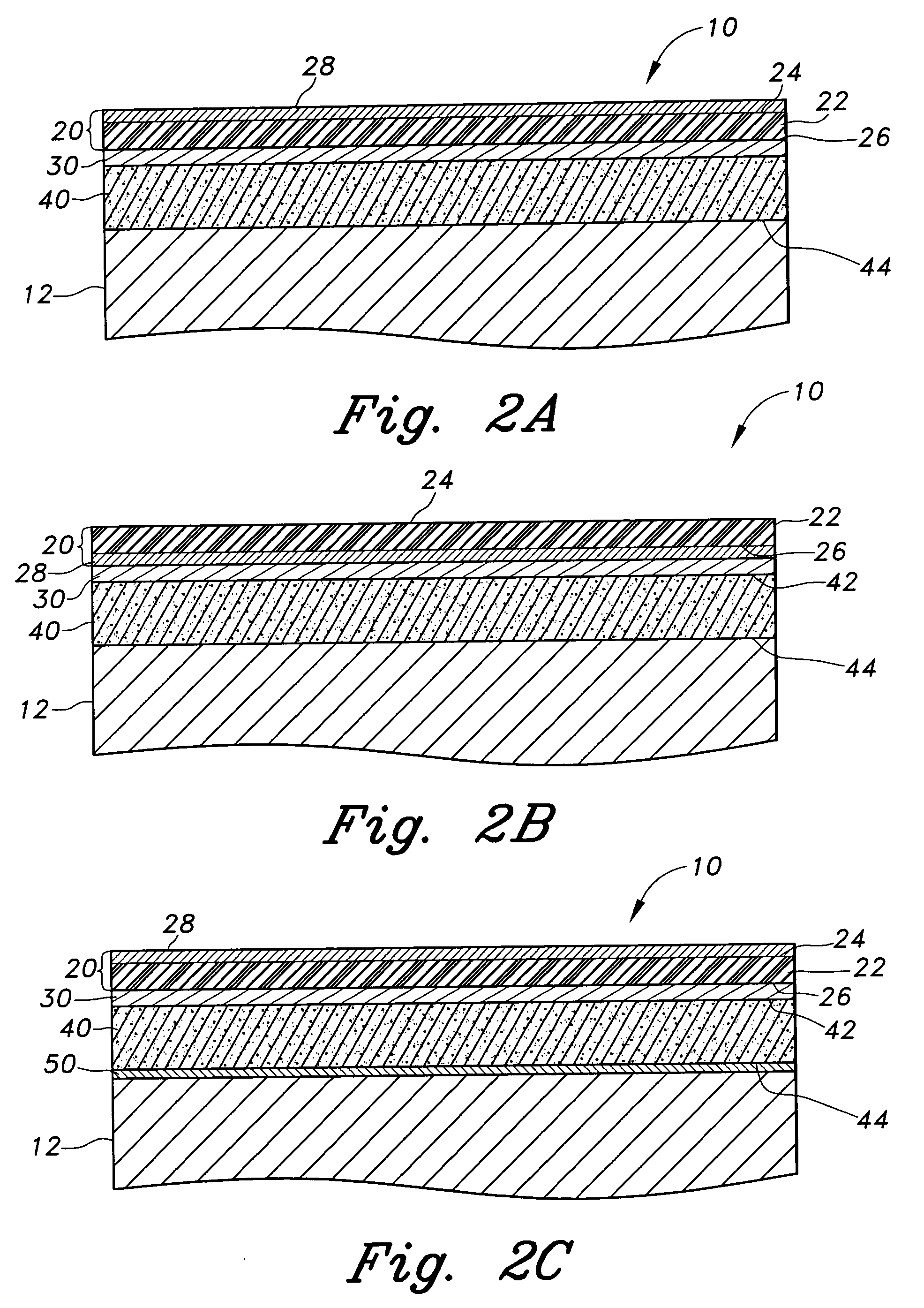Shelf liner
a non-slip, liner technology, applied in the field of liner, can solve the problems of adhesive backing liner not being removed for cleaning, unable to hide surface flaws or unevenness, and leaving behind adhesive residue, etc., to achieve the effect of strengthening the fused bonding of layers
- Summary
- Abstract
- Description
- Claims
- Application Information
AI Technical Summary
Benefits of technology
Problems solved by technology
Method used
Image
Examples
Embodiment Construction
[0035] The present invention is a shelf liner, designated generally as 10 in the drawings. The shelf liner 10 is formed primarily of layers of plasticized polyvinyl chloride materials, fused together to form a durable liner with a non-skid bottom surface and a decorative and protective top surface. The shelf liner is illustrated in FIG. 1, with a top sheet 20 cut-away to show a foamed plasticized polyvinyl chloride substrate layer 40.
[0036] Turning now to FIGS. 2A-2C, the layers of the shelf liner 10 can be seen in greater detail. The substrate layer 40 has a top surface 42 and a bottom surface 44. The top sheet 20 comprises a thin polyvinyl chloride film 22 having top and bottom surfaces 24,26, and optionally a decorative coating 28. In use, the shelf liner 10 is placed on an application surface 12, such as a desk, shelf, countertop, etc., with the substrate bottom surface 44 in contact with the application surface 12. Because of the somewhat tacky, frictionalized nature of the su...
PUM
| Property | Measurement | Unit |
|---|---|---|
| elastic | aaaaa | aaaaa |
| coefficient of friction | aaaaa | aaaaa |
| flexible | aaaaa | aaaaa |
Abstract
Description
Claims
Application Information
 Login to View More
Login to View More - R&D
- Intellectual Property
- Life Sciences
- Materials
- Tech Scout
- Unparalleled Data Quality
- Higher Quality Content
- 60% Fewer Hallucinations
Browse by: Latest US Patents, China's latest patents, Technical Efficacy Thesaurus, Application Domain, Technology Topic, Popular Technical Reports.
© 2025 PatSnap. All rights reserved.Legal|Privacy policy|Modern Slavery Act Transparency Statement|Sitemap|About US| Contact US: help@patsnap.com



